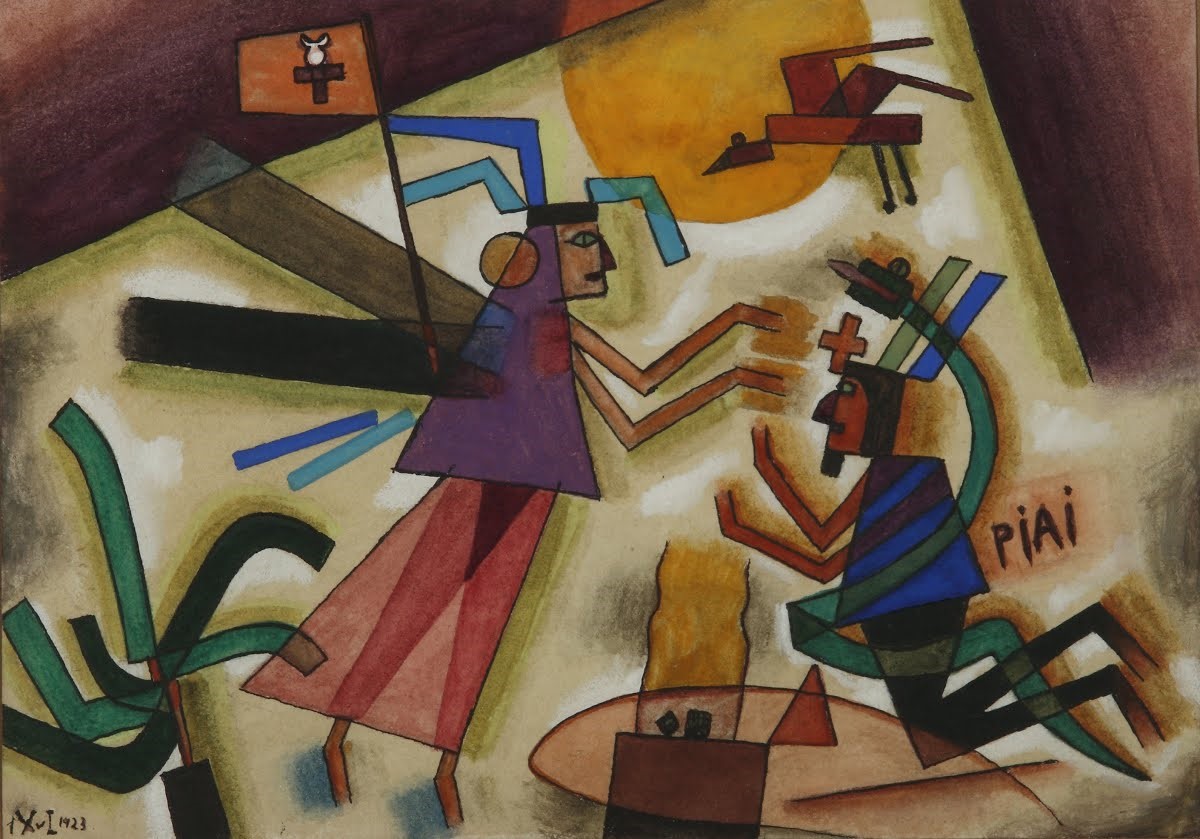Oscar Agustín Alejandro Schulz Solari, better known as Xul Solar (San Fernando, December 14, 1887 – Tigre, April 9, 1963) was an Argentine painter, sculptor, writer, musician, astrologer, esotericist, inventor and linguist. He was a person of multifaceted character, versed in astrology, occult sciences, languages and mythologies. According to Borges, Xul had created several cosmogonies in a single afternoon. He knows approximately twenty languages, such as French, Italian, English, Japanese, Sanskrit, Aramaic, Guarani, German, Russian, among others. He managed to create two constructed languages: panlengua and neocreollo. He also created panchess, in which there were more conventional squares and they were related to constellations and zodiacal signs. He invented a piano keyboard made up of three rows of colored and raised keys with a six-note musical scale.
His curiosity was inexhaustible. His interests covered topics such as mathematics, biology, metaphysics, architecture, music, Persian and Arabic scriptures, Muslim religions, Rumi’s Sufism, the Upanishads of Hinduism, the Zend Avesta, alchemy, Saint Francis of Assisi, Zen Buddhism, I Ching and astrology. His library was made up of more than three thousand titles.
He creates most of his work in small or medium format, using watercolor or tempera, although he also uses oil, experimenting with unconventional supports such as cardboard, wood and glass. His first paintings are loaded with symbolism and the drawing is schematic. Around 1918, his subject matter began to include architectural motifs and geometric compositions. Starting in 1923, the human figure was included.
In 1924, back in Argentina, he adopted symbols such as signs, letters, flags, religious symbols such as the cross and the star of David; numbers, arrows, tarot signs, allusions to eastern beliefs such as the snake, the dragon and the bird. His technique includes flat schematic shapes and geometric figures.


 Solar Xul
Solar Xul